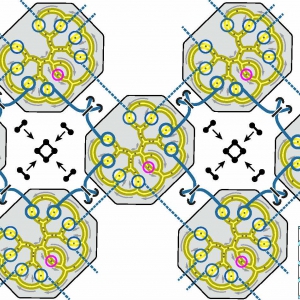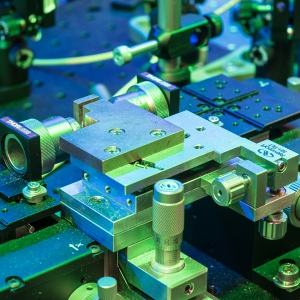Technology Overview
- The hardware stream is focused on developing the components of the Q20:20 engine and producing spin-out technologies.
- The applications stream looks at the possible uses of the Q20:20 engine and how it might be used for real-world applications such as secure communications and digital simulation.
- The architecture stream builds the interface between our hardware and applications research by developing performance requirements for the components, coordinating the engineering design and road-mapping of the Q20:20 engine.
The network architecture ensures that larger machines can be constructed once we have developed the nodes and the channels of the quantum network to a sufficient level of performance. The critical technology path is based on a network of trapped ion microprocessors interconnected using light, configured so that the whole is fault-tolerant. We will also deliver spin-off technologies from the work, including technologies that may be useful to the work of other Quantum Technology Hubs.
Our approach is to use matter – atoms – as elementary processors for quantum information, and light – photons Photon – as the means to transport the information between the atoms. The architecture is thus a hybrid light-matter quantum network Quantum Network, which will leverage all of the important features of classical networks that make them indispensable for classical communications and computation.
The NQIT programme also encompasses technology development for applications in some of the most promising of the competing technologies, particularly colour centres in diamond Diamond colour centres and superconducting circuits Superconducting qubit. These can be utilised in the same architecture as the Q20:20 engine and will provide some early spin-off technologies. This approach enables NQIT both to deliver applications in these important technologies and to grow expertise so that NQIT can make use of developments elsewhere in the world if they positively impact the Hub’s goals.
_0_itok=ziSv92ZX.jpg)


_1_itok=rq8YjXIR.jpg)

